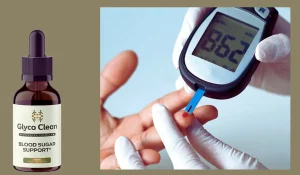Molds play a crucial role in the ecosystem’s food chain by breaking down dead plants and animals and aiding in nutrient recycling. They are ubiquitous and we are constantly exposed to them. However, sometimes they settle down on damp surfaces and grow posing various threats to human health. Let’s take a comprehensive look at what molds are, what mold toxicity is, what their symptoms are, and how they can be prevented.
What Are Molds?
Molds are microscopic organisms that grow on decaying organic matter. It falls under the fungi category and grows in multicellular filaments called hyphae. They are present literally everywhere and thrive in moist, damp, and humid atmospheres.

They reproduce by releasing microscopic pores, that are carried to great distances by wind. These spores settle and grow in damp spots. Besides, when released, they can also be inhaled, swallowed, and can come in contact with the skin.
What Is Mold Toxicity?
Molds produce toxic substances called mycotoxins(NIH) which can cause various health problems. Exposure to these mycotoxins can lead to a condition called mold toxicity or mycotoxicosis.
The extent of the impact of these toxins depends on the duration of exposure, the type of mycotoxins involved, and the individual’s health condition.
10 Warning Signs Of Mold Toxicity
- Chronic fatigue and weakness
- Headaches or migraines
- Respiratory issues
- Nasal congestion and sinus issues
- Skin problems
- Neurological and cognitive issues
- Digestive problems
- Muscle and joint pain
- Eye irritations
- Mood disruptions and anxiety
Early detection and treatment of mold toxicity is really important as prolonged exposure to mold can lead to severe health problems. The symptoms might vary from person to person, but let’s take a look at a few common symptoms of mold toxicity.
1. Chronic fatigue and weakness
If you are persistently feeling tired throughout the day, it could be a symptom of mold toxicity. The microscopic spores can deposit in the nasal passage and move toward the lungs, causing pneumonia.
This results in reduced oxygen intake and a perpetual feeling of fatigue. Besides, mold exposure can also disrupt sleep patterns that affect the duration and quality of sleep, which leads to feelings of tiredness all day.
2. Headaches or migraines
Frequent and persistent headaches can be a sign of mold toxicity. When you stay in a moldy environment for a long time, your immune system tries to fight down the spores resulting in headaches.
Conventional treatment methods may not help in this case and leaving the mold-infested environment to get fresh air is the best solution here.
3. Respiratory issues
Respiratory problems are one of the most common signs of mold toxicity. Coughing, wheezing, shortness of breath, and a feeling of tightness in the chest can result from mold exposure. It can trigger asthma in individuals allergic to mold spores or those who have existing respiratory conditions.
Prolonged mold exposure can also aggravate conditions including bronchitis, hypersensitivity pneumonitis, and lung inflammation.
4. Nasal congestion and sinus issues
Nasal congestion and sinusitis can also be due to mold toxicity. The mold spores can irritate nasal passages and sinuses and cause congestion, sinus pressure, and inflammation. This results in difficulty in breathing through the nose.
5. Skin problems
Some people might have allergic reactions like redness, itching, or rashes when exposed to mold. Direct skin contact with the spores or inhaling them can result in these symptoms.
6. Neurological and cognitive issues
Mold toxicity can lead to cognitive impairments with symptoms like difficulty concentrating, brain fog, memory loss, etc. In extreme cases, it can even lead to dementia and reduced cognitive and neuropsychological function. This can affect daily life tasks and diminish overall productivity and quality of life.
7. Digestive problems
The mycotoxins when inhaled or ingested can negatively impact gastrointestinal functions. It alters the composition of the gut microbiome and destroys intestinal barriers.
Individuals may experience bloating, diarrhea, vomiting, intestinal bleeding, abdominal pain, or even constipation. It can also reduce the rate of nutrient absorption in affected individuals.
8. Muscle and joint pain
Some people experience muscle and joint pain due to mold exposure. In certain cases, it can lead to fungal arthritis, where the infection spreads into joints. It can be caused by direct contact of the fungus with the joint through surgery or trauma. Pain, swelling, and inflammation in the joints are the outcome.
9. Eye irritations
Redness, itching, and watery eyes result from mold infection on the eyes. Prolonged exposure can even lead to conjunctivitis, resulting from the inflammation of the conjunctiva.
10. Mood disruptions and anxiety
Mold infection can interrupt the brain’s neurotransmitter functions which can lead to severe mood swings, anxiety, and even depression. Mycotoxins disrupt the brain’s normal functions and prevent the secretion of happy hormones like serotonin and dopamine, which can result in mood imbalances.
Also Read: Does Ozempic Cause Headaches? Clarity Amidst Concerns
Bottom line
Although mold plays a crucial role in balancing the ecosystem, it can get nasty when it affects the body. Mold toxicity is not something that you can dismiss as a silly fungal infection. It can have multiple severe impacts on the body as well as the mind.
Controlling the humidity levels is the key to hindering mold growth. Prevention is always better than cure and preventing mold growth in damp and humid areas is the best you can do.







